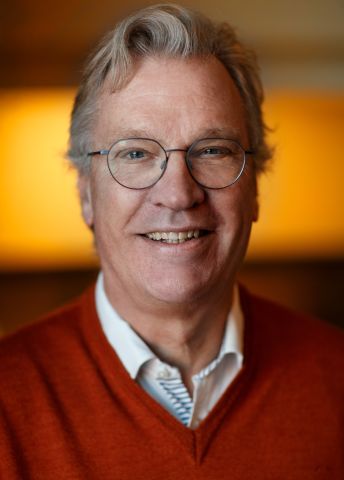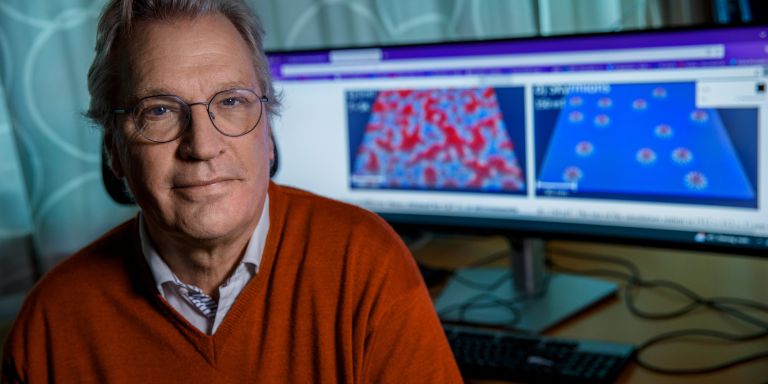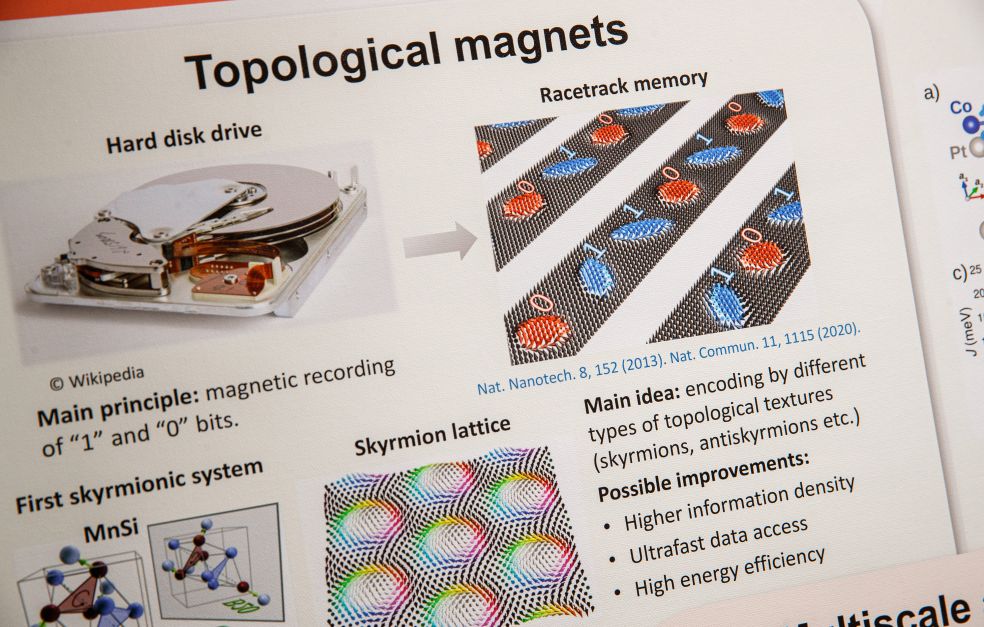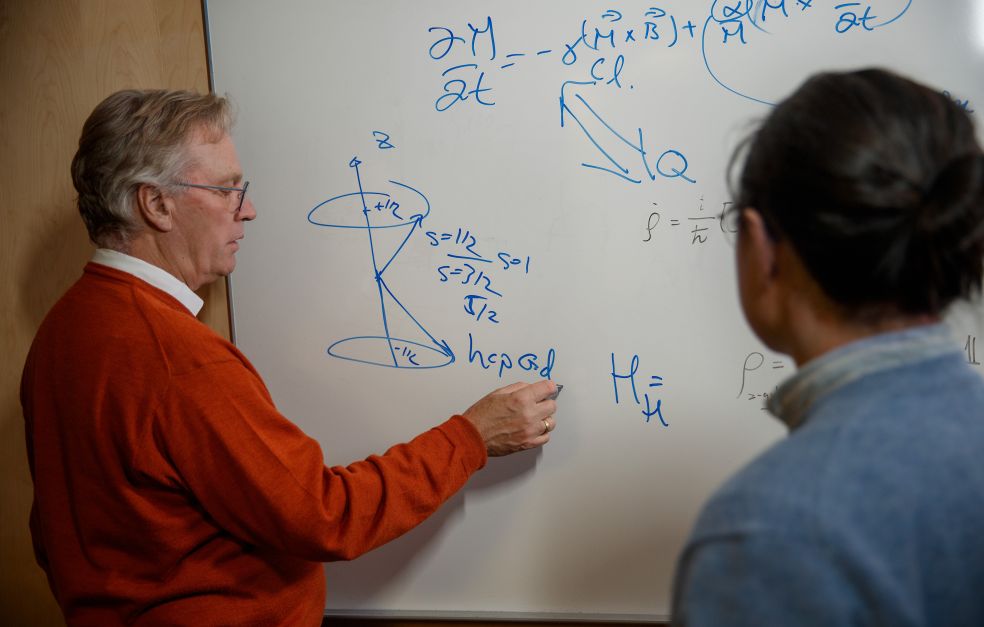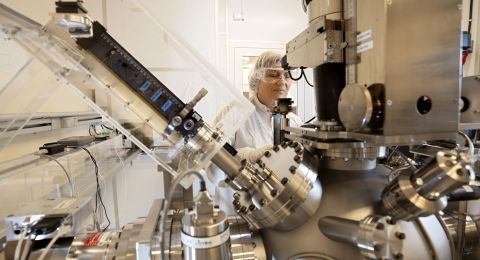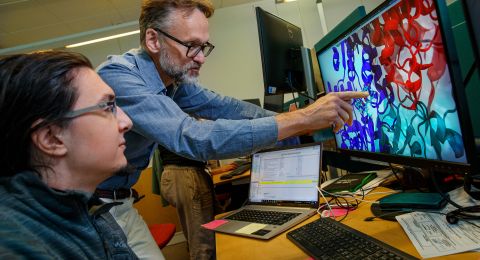Recently developed concepts and mathematical equations from the Ångström Laboratory in Uppsala may aid the discovery of new magnetic materials with exciting properties. Olle Eriksson, who heads the research project, explains how the team is comparing two- and three-dimensional quantum materials.
Olle Eriksson
Professor of Theoretical Magnetism
Wallenberg Scholar
Institution:
Uppsala University
Research field:
Examining the properties of magnetic materials in theory and in practice
Magnetic materials consist of elements that are easily attracted to other magnets and that can be magnetized themselves. Nowadays they are used to store large quantities of electronic information or to produce green energy from wind turbines or hydropower plants. But there is a growing need for new magnetic materials – and the hunt is on for new magnets.
“We are translating mathematical concepts and equations into a language that computers can understand. We then program the equations to find solutions that capture and visualize the properties of the materials,” says Eriksson, who is Professor of Theoretical Magnetism at the Ångström Laboratory at Uppsala University, where he heads a large team of researchers.
The mathematics is in turn based on the Schrödinger equation, which describes the dynamics of fundamental building blocks of matter– electrons in particular. Electrons may be seen as satellites orbiting the atomic nucleus. Their number, interactions and movements determine the properties of a given material.
Interpreting the “fingerprints” of materials
“We’re engaged in materials research while also devoting considerable time to provide theoretical tools for two major experimental facilities – MAX IV and ESS – in Lund,” he says.
“When ESS becomes fully operational some time in 2027 we theoreticians will be well prepared. We’ve developed techniques to help analyze results at ESS, as we have done for MAX IV.”
MAX IV uses synchrotron light to visualize the nanostructure of materials, whereas the researchers at ESS will fire neutrons at them. The purpose of both methods is to reveal a material’s properties. The spectra that are obtained are materials specific and may be likened to fingerprints that are unique for every human.
“We need to understand why different spectra look the way they do, and how they relate to various material properties. It’s our job to find out,” says Eriksson, adding:
“This applies to the properties of magnetic materials as well as non-magnetic ones.”
The data gathered on magnetic materials will be stored in a database currently being set up by researchers at the Ångström Laboratory and KTH Royal Institute of Technology in Stockholm.
As a Wallenberg Scholar, Eriksson will continue to look for suitable magnetic materials over the next five years – with the aim of “making an impression in the transition to sustainable energy sources”
We need to understand why different spectra look the way they do.
Strongly magnetic materials are largely made of rare earth metals such as neodymium, often in mineral form, which is currently mainly mined in China. But these metals are often expensive, and their extraction has a severe adverse impact on the environment.
Eriksson’s team is therefore exploring less costly and better alternatives. Among other things, they are studying two- and three-dimensional magnetic products, i.e. materials forming laminates of two or three layers. At first, this idea was by no means self-evident.
The surprise of graphene
“When the 2010 Nobel Prize in Physics was awarded for the discovery of graphene, a two-dimensional layer of carbon, it came as a surprise to us physicists, since we believed that a material could not exist in a stable form in a two-dimensional geometry. But this proved to be untrue,” recalls Eriksson.
Soon afterward magnetism researchers began to examine 2D materials with distinct magnetic profiles: either ferromagnetic or antiferromagnetic.
As far back as 2013 Eriksson’s research team published a projection of potential future 2D materials, predicting forthcoming developments.
“One topic we want to address is whether the way electrons move and behave in the material is different in a 2D world than in a 3D world,” says Eriksson.
Green rust – magnetically appealing?
To date the team has explored and described some 20 new 2D materials, of which some are magnetic and others not. But according to Eriksson, about one hundred new 2D materials may be discovered across the world over the next ten years. These include materials that are sometimes described in geophysical contexts and that can become magnetic, such as hydroxides and dihydroxides.
The researchers at the Ångström Lab are also studying the magnetic properties of green rust – iron in a special hydroxide/carbonate form – in an effort to determine its potential applications.
Topological magnetic structures are also of interest to the team. One such structure is the skyrmions structure, in which magnetism flows like a twisting whirlpool in a lake before moving in the same direction toward the center.
“There are different types of skyrmion, and they can be found in a variety of materials, or quantum materials as they often are called. Their common feature is a specific internal structure, a topology,” says Eriksson, adding:
“Their potential applications are as information carriers, since their unique topology gives them enhanced protection against interference. They are also more stable than other magnetic structures.”
Atom-thin magnetic supermaterials are also of interest with a view to creating future sustainable, sensitive and energy-efficient sensors or as storage media for huge quantities of digital data.
Text Monica Kleja
Translation Maxwell Arding
Photo Magnus Bergström
